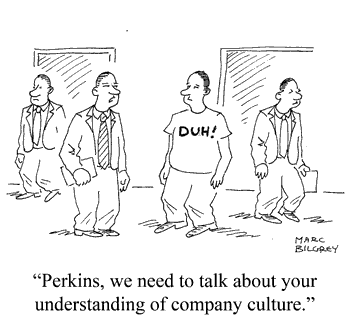Unit 11: The Business Context
WRLD 302 - Communicating Across Cultures
about this tutorial...
This is one in a series of tutorials on intercultural communication. Click on "mobile page" at the bottom of the page for alternative views. You may create a print version by clicking on the "print all" link at the top of the page. Note that additional learning resources are linked in the sidebars.
Anticipated completion time for this tutorial (not including reading chapter): approximately 110 minutes. Note that you can stop and come back and your score on completed items will be retained.
Learning Objectives
The objectives below can be achieved through working with the assigned readings, watching the presentations, doing the tutorial exercises, and posting to the discussion forums. Achievement of the objectives will be measured through the score achieved on the exercises (questions can be answered more than once), on the Blackboard quiz for this unit, and on the quality of contributions to the course discussion forums.

By successfully completing this unit, students should be able to...
- Discuss how the cultural context affects businesses across cultures
- Identify how the environmental context affects doing business in other cultures
- Discuss how the perceptual context can influence businesses across cultures
- Compare and contrast socio-relational contexts on the job across cultures
- Discuss some verbal and nonverbal differences across cultures
- Compare managerial styles of business etiquette in selected cultures
- Describe the manager-subordinate relationships in selected cultures
|
Resources for this unit
- Chapter 11, Neuliep, Intercultural Communication: A Contextual Approach
- Key terms (last page of this tutorial)
- Chapter summary (in Blackboard: Course Library > Textbook Resources)
- Three presentations and thirteen exercises (in this tutorial)
- Supplemental readings on business culture (see Blackboard)
- Discussion forum: Ethics and International Business
- Unit Opener: Business communication in Japan (next page)
UNIT OPENER: Film clip - Business communication in Japan
This clip is taken from Gung Ho (1986). An American businessman has come to Japan to try to convince a Japanese car company to take over a closed auto factory in his home town in Michigan.
|
First, watch the video (about 2 minutes long) below:
Video clip not available on YouTube - see the stills on the next page
|
After watching the video, think about the following:
- How does the American greet the assembled Japanese executives?
- What communication style does he use?
- How could one characterize the kind of English he speaks?
- What differences are there between the American and the Japanese in terms of non-verbal communication?
- What topics does the American bring up that might not be appropriate, given the context?
Now, turn to the next page for comments.
|
UNIT OPENER: Comments and Analysis
|
1. How does the American greet the assembled Japanese executives?
"Hi, fellas", he says to a group of Japanese executives seated around a conference table. He then introduces himself in (very broken) Japanese. This is not the normal way businessmen in Japan would act upon meeting each other for the first time. Rather, they would hand over their business cards with a slight bow. Like many aspects of Japanese culture, there are set rituals attached to conducting business in Japan. The American visitor would have made a better initial impression if he had followed these conventions.
2. What communication style does he use?
He uses a very informal mode of address, talking freely and casually to the executives. He is speaking off the cuff and does not always use complete sentences. He does not demonstrate any particular deference (by lowering his eyes or bowing, for example). Nor does he seem conscious of the desirability of adjusting his language to an audience of non-native English speakers. In a real business context in Japan, particularly giving a presentation, the preferred communication style would be much more formal, with a prepared and well-rehearsed presentation in standard and grammatically correct language.
3. How could one characterize the kind of English he speaks?
He speaks fairly quickly and in the same way he would talk to colleagues back home. He uses slang ('fellas", "lugged", "I am like crazy for your country", "it's damn nice", "jeez", "yikes"). He also tries to use humor to connect with his audience and lighten the mood - joking about how far he's schlepped the screen that's not needed or that the Japanese must be pressed for time since they have a "long day of staring" ahead of them. He also tries to make a pun about "putting out" - his Japanese audience is unlikely to be familier with the sexual usage of this term. Humor is tricky to get if it's not in your native language and that's even more the case with puns. American businessmen often have difficulty adjusting their English to the audience they are addressing, in large part because most are monolingual and therfore lack awareness of language pragmatics and language registers.
4. What differences are there between the American and the Japanese in terms of non-verbal communication?
The Japanese executives are mostly silent. This is perceived as awkward by the American, or as a sign that the Japanese are not understanding him. Silence is a normal part of the communication process in Japan and long pauses in conversations are not unusual or considered undesirable. The American uses gestures quite a bit, and very informally, mostly illustrators that accompany his speech. He often adds emphasis to a sentence through body language, by leaning over and waving his hand to an executive or putting his hands on his hips. He is much more demonstrative than would be typical in a Japanese business setting. At one point, he pats one of the Japanese execs on the shoulder after making a joke. Japan is a low touch culture, and it would be even less appropriate in the more formal business setting than elsewhere to be touching someone in this way. Non-verbal conventions are very important in making a good impression, making yourself understood, and appropriately reinforcing your verbal message.
5. What topics does the American bring up that might not be appropriate, given the context?
He complements the Japanese on the "real oriental" decor, asking "Did you decorate this place yourself"; these men are executives, unlikely to have been involved with the room decoration. The question might be appropriate in visiting a Japanese home, but not here. He also mentions that his dad "was over here with the army", a reference to the American occupation of Japan after World War 2, clearly not a good topic to bring up with this audience, which includes older men who might even have been involved in the war. The picture of Hazel, as well as his jokes about her, are not likely to be well received - Japanese tend to be more serious in formal business meetings.
|
What's the point of this unit's opener?
This film is a comedy and as such it skirts the boundaries of likely behavior on the part of the American businessman. It's not likely either that the Japanese businessmen would stay seated when the foreign guest entered the board room. However, despite some caricatures, the film does highlight some principal distinctions between American and Japanese business cultures. The American earns points for trying to learn a few Japanese phrases (always desirable) but otherwise he misses the boat completely. In many parts of the world, the corporate culture and business etiquette are considerably more formal than in the U.S. and knowing the conventions (greetings, style of conversation, appropriate topics, normal seating arrangements, negotiation practices) is important if one is to be successful. Often American businessmen lose out to those from cultures (such as Western Europe) where there is a greater awareness of cultural diversity and more proficiency in speaking other languages.
PRESENTATION 1
NOTE: You should have read pp. 373-386 in the textbook before watching the presentation.
=> YouTube version | View/print lecture outline
EXERCISES 1
Q1: Doing business abroad
Q2: Business in large power distance cultures
Q3: Family-style companies
Q4: Use of English
Q5: Non-verbal communication
PRESENTATION 2a
NOTE: You should have read pp. 386-394 in the textbook before watching the presentation.
=> YouTube version | View/print lecture outline
EXERCISES 2a
Q6: Business cards in Japan
Q7: Daily exercise sessions in Japan
Q8: German business culture
Q9: German business strategy
PRESENTATION 2b
NOTE: You should have read pp. 394-402 in the textbook before watching the presentation.
=> YouTube version | View/print lecture outline
EXERCISES 2b
Q 10: Meixcan business structure
Q 11: Mexican workers
Q 12: Chinese business culture
Q 13: Doing business in the Middle East
Further Resources
For preparing for the on-line quizzes on this material, the publisher Web site can be helpful. It includes Flashcards that cover most of the key terms listed below, There is also a Web quiz in multiple choice format that would be good practice for our on-line quiz. If you take the practice quiz from the publisher, you don't need to send the results to me (you can email them to yourself instead)
Key Terms
- acculturation: The process of cultural change that results from ongoing contact between two or more culturally different groups
- acculturative stress: The anxiety and tension associated with acculturation
- adjustment phase: Third stage of culture shock, in which people actively seek out effective problem-solving and conflict resolution strategies
- affective component: Approach-avoidance tendencies during intercultural communication; the extent to which one experiences intercultural communication apprehension and one's willingness to communicate
- assimilation: The degree to which an individual takes on the behaviors and language habits and practices the basic rules and norms of the host culture while relinquishing ties with the native culture
- cultural transmutation: Mode of acculturation in which the individual chooses to identify with a third cultural group (microculture) that materializes out of the native and host cultural groups
- culture shock: The effects associated with the tension and anxiety of entering a new culture, combined with the sensations of loss, confusion, and powerlessness resulting from the forfeiture of cultural norms and social rituals
- guanxi: Chinese for relationship or connection, refers to the importance of personalized networks of influence in the Chinese business community
- integration: Mode of acculturation in which the individual develops a kind of bicultural orientation that successfully blends and synthesizes cultural dimensions from both groups while maintaining an identity in each group
- intercultural communication competence: The ability to adapt one's verbal and nonverbal messages to the appropriate cultural context
- intercultural willingness to communicate: Predisposition to initiate intercultural interaction with persons from different cultures even when completely free to choose whether or not to communicate
- knowledge component: The extent of one's awareness of another culture's values and so forth; also, the extent to which one is cognitively simple, rigid, and ethnocentric
- psychomotor component: The extent to which one can translate cultural knowledge into verbal and nonverbal performance and role enactment
- reentry shock: The effects associated with the tension and anxiety of returning to one's native culture after an extended stay in a foreign culture
- taiso: tai (body) + so (hardening) is a generic Japanese term for conditioning or exercising, a regular part of the daily routine in many Japanese factories
|
feedback on this tutorial...


